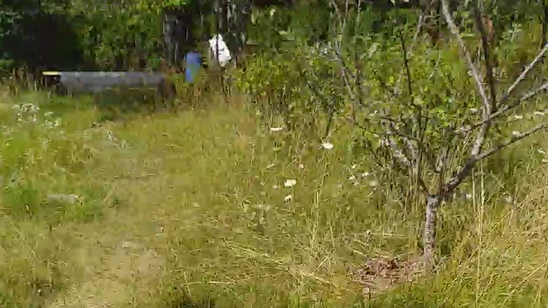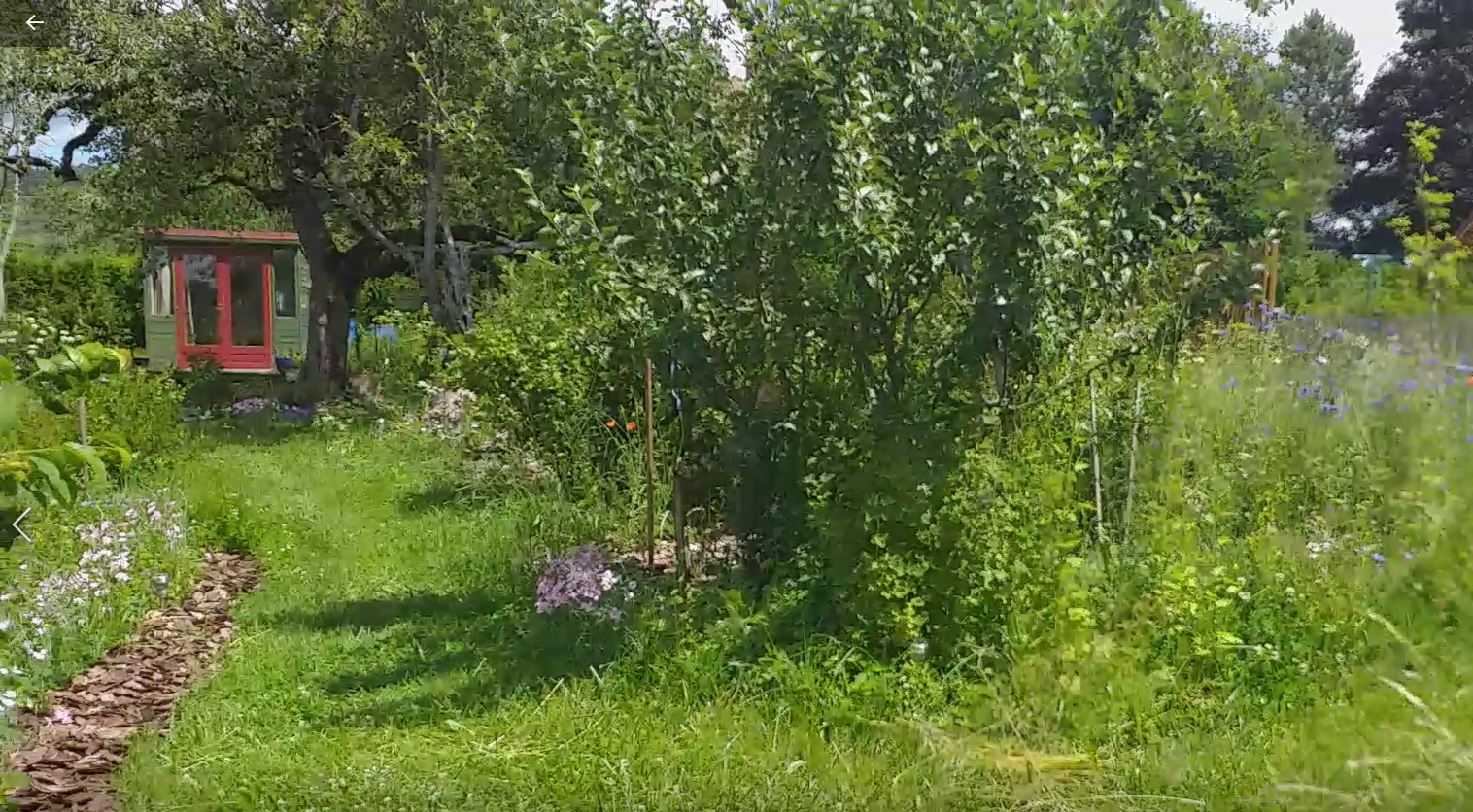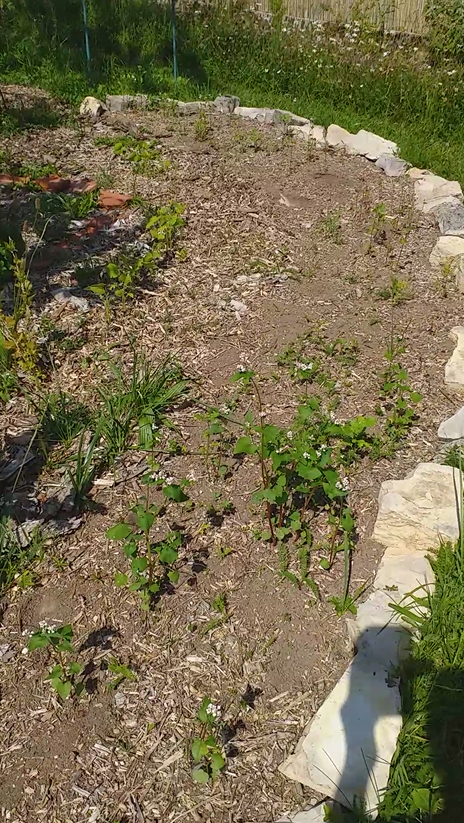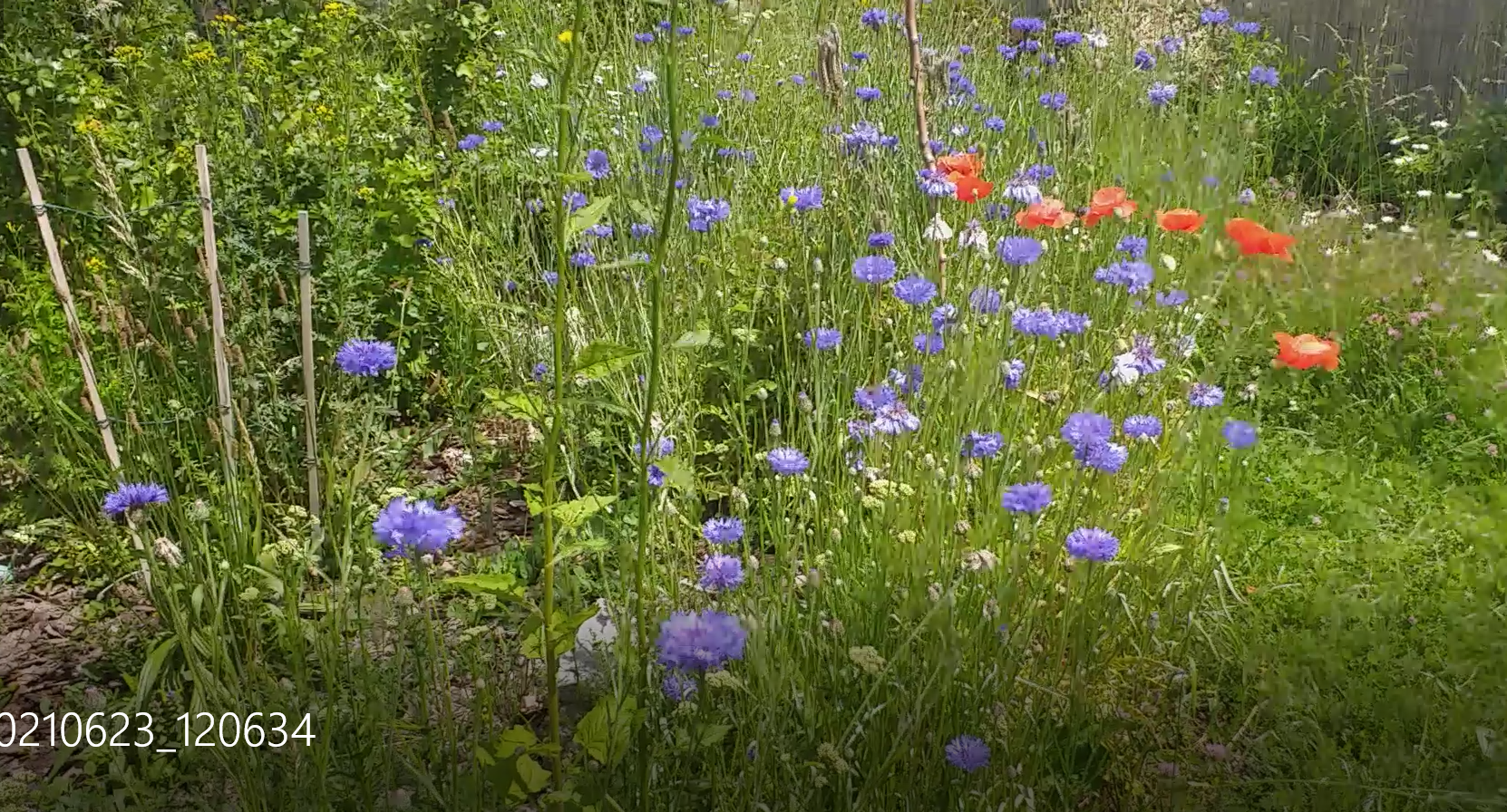AUTHOR MUSINGS
Some words of wisdom
Please sign up below for exclusives, free books, and a monthly email.
The slow speed of growing trees 28th June 2021 Podcast Version >>
I think when you see something everyday you don’t see the changes and that’s been me with regard to our forest garden. I’ve been disappointed, wondering where we are going wrong, feeling that we are not achieving our goals.
I do see the tiny changes: the flower that opens; the different scents; the climbing plant that has reached a new height; a perennial plant I thought had died resprouting; the very few plums and even fewer apples; the ripening of the red currants; the plants which are going to seed.
I’ve seen these changes because I’ve made an effort to focus on seeing something new every day, on being in the here and now. And that’s a good thing to do but some days I sigh with frustration at the slowness of things.

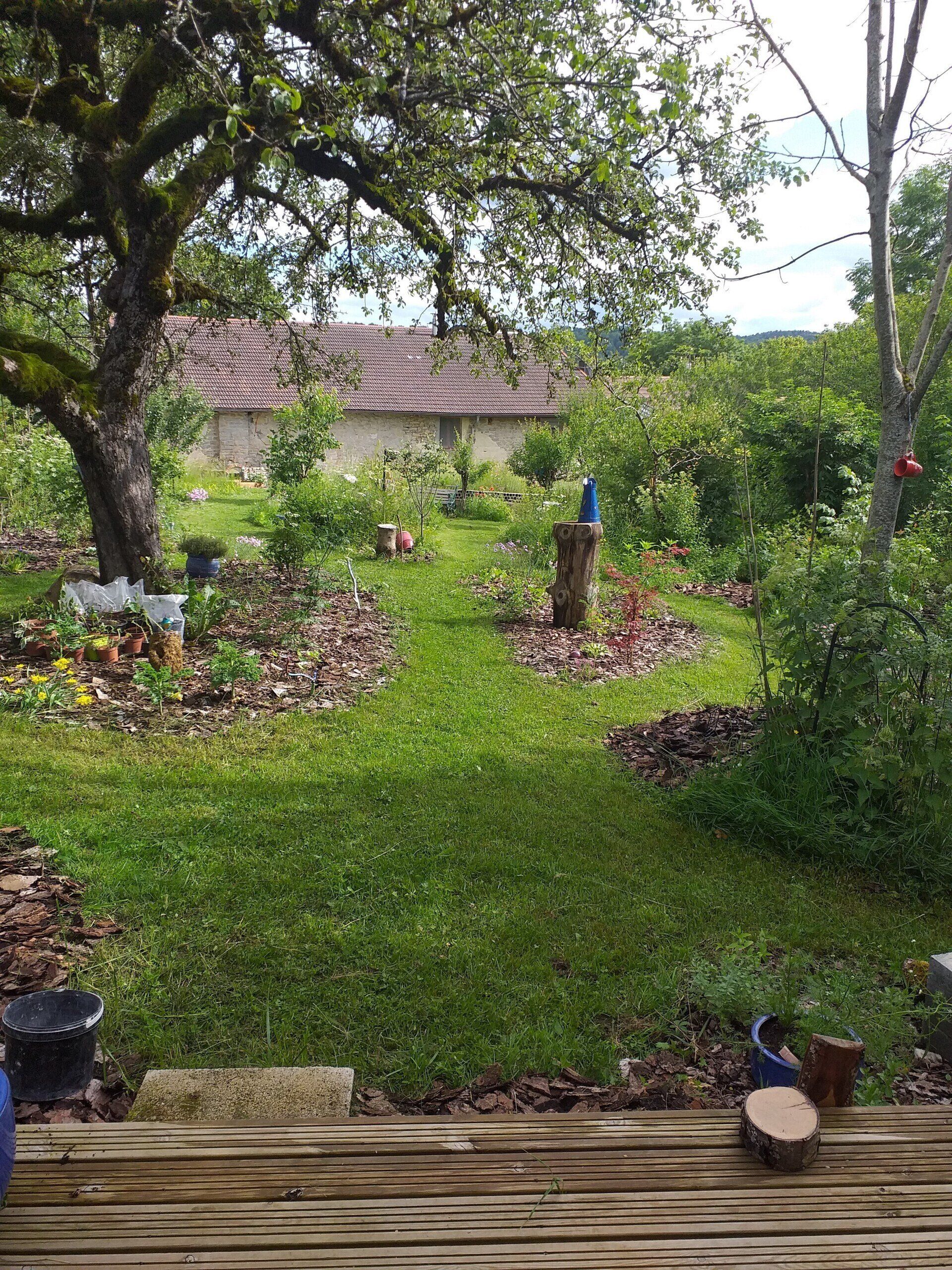
Maybe looking at the details means I’ve forgotten how to view the bigger picture.
It is time to look at the garden video from September 2019 and June 2020. I am so pleased I started this monthly video as it really shows how we began and what we have now. And there is no way I can deny the huge progress and changes we have made in a short time.
The biggest change has been having no lawn, the mown grass pathways are becoming more other plants now than just grass and the barked areas are creating better soil for all the plants we have planted, and we have planted hundreds.
I’m shaking my head at my crazy thoughts of no progress. What was I thinking?
As I watch the video from June 2020 I laugh, for there are garden patches with plants in this year that were grass last year. How can I possibly think we’re not making progress?
The problem is me being impatient, wishing I’d started this forest garden a few years ago. I watch videos of established gardens and although I know they have been in existence for at least ten years I can’t help but compare.
Martin smiles at me and shakes his head. He knows me so well.
I flick through the photos and compare specific areas.
I notice how the fruit bushes have thrived and grown but the trees are so much slower and that’s just how it should be, trees do grow slowly and some of the trees have not even been in the garden for a year yet, what was I thinking to dismiss their growth as nothing. Poor trees, my expectations have been too high. They have all grown a little, some of the plum trees are recovering from our brutal pruning throwing branches and bright green leaves up towards the sky.
Some changes are sad. We lost the mulberry bush. I loved the idea of having a mulberry bush to dance around. I also wanted it because it is an old fruit, but it just couldn’t cope with the harsh winter. One of the chokeberry bushes also died but the other three are doing okay and even have a few berries despite being knocked back by the warm/frost cycle of this year’s spring.
Some flowers this year are taller and brighter and earlier while others are later to flower. The wildflower patch was bare earth this time last year and this year is full of tall, bright-blue cornflowers and deep red poppies. It’s beautiful. The bottle wall garden has gone crazy this year, it’s bursting with plants, colour, and insects. And the two tiny vines we planted last year are growing stronger and larger by the day despite their tall neighbours.
Most of the annuals, which are more susceptible to changes in the weather, are slower to grow this year and some of the perennials too. It has been so wet the slugs and snails are very hungry and have eaten any tiny seedlings so I am continuing to grow some in pots hoping they will be strong enough to survive the munching when I put them out as I did enjoy picking and eating beet leaves through the winter last year.
Thinking about the perennials, I realise that last year we planted perennials as plants and this year they’ve had to grow back from their winter sleep. So, of course they will be taking longer to appear.
We have planted many perennials this year too, gifts from a neighbouring gardener who is more of a permaculture gardener than forest gardener but many of the principles are similar and wild, native, and perennial plants are high on the list of similarities. Many of these are strong, maybe they don’t taste as good as the annuals, and will continue to spread and grow bigger each year.
We have a wider variety of self-seeded plants in the garden, too, and are often taking photos to identify a newly seen flower or plant. Perhaps a lot of them are plants we considered to be weeds in the past and pulled out before they could display their flowers, attract the insects, and teach us their worth.
We’ve changed too.
And I don’t mean the clothes we are wearing in photos especially as there are not many photos of us in the garden, we’ve not recorded the planting of trees or the creating of growing spaces with us doing it, only after it has been done. I need to remember to take some with the forest gardeners in action. We’ve changed in our attitude towards weeds and wildflowers. When we are cycling, we notice the flowers and plants in a way we didn’t before. We saw a bee orchid the other day while looking at a white flower which turned out to be privet and is already in the garden.
I think there is more wildlife, certainly solitary bees, birds, mice, and voles, and today we noticed lots of ladybirds on a plum tree that is covered in aphids. And there were wasps too, climbing into the curling leaves to have a snack. We’ve never seen that before and are grateful for their help.
We are making more habitats for insects which creates more food for birds and small mammals, but I don’t think it had really registered in my mind that it is happening, and we are making a difference until I wrote this blog.
That’s one of the benefits of being a writer. Writing gives me the space and time to formulate my thoughts, to mull over ideas and express them with the opportunity to edit, change, and refine, which might be why I prefer writing about things to talking about them, although Martin may say I talk enough. And I could quite easily go off on a tangent and start making comparisons with my impatience in regard to our garden and the pandemic situation, but I’ll leave you to do that.
I conclude that our forest garden is progressing, and I need to accept that the slow speed of growing trees is not a bad thing.
It gives me time to experiment and learn, to observe and appreciate, to accept what I have no control over, and to enjoy every moment spent in this tiny piece of the world.
Subscribe to my secret library
Copyright © 2020 Jenni Clarke Author. All Rights Reserved
